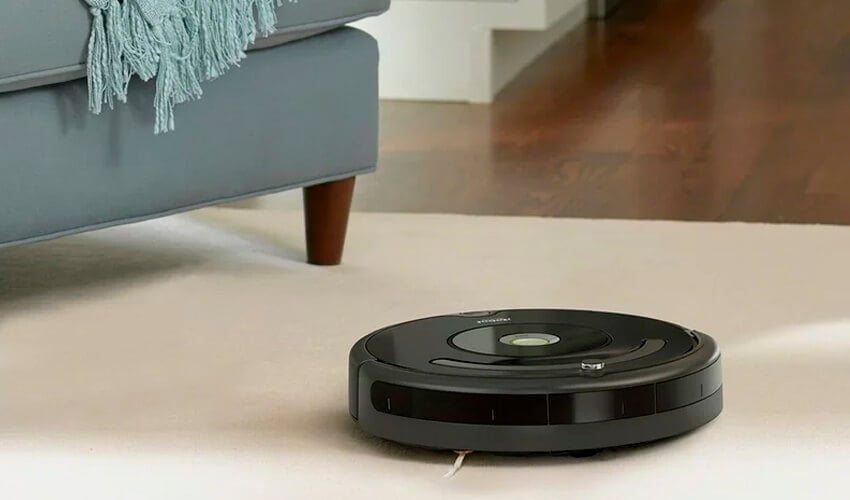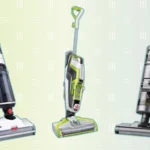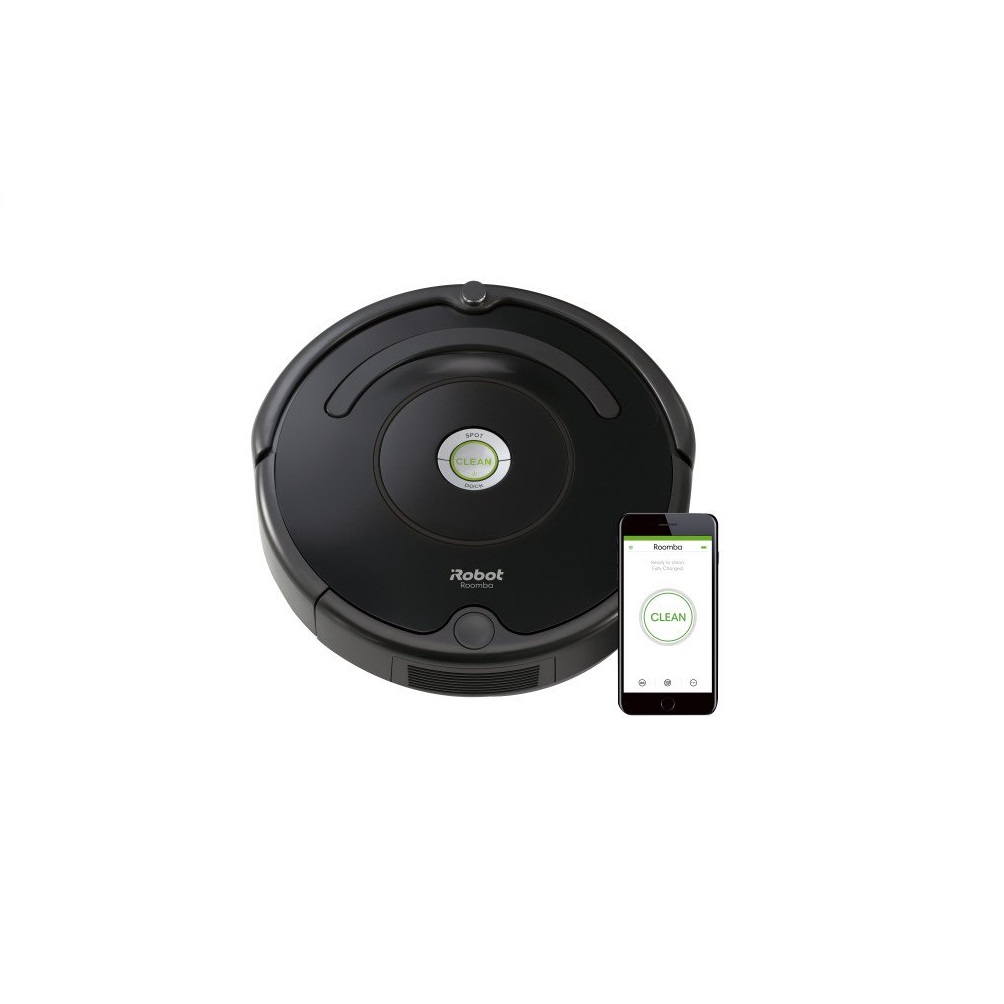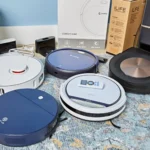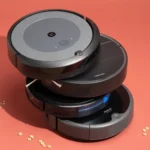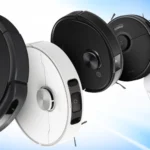The modern smart home market offers so many options to choose from for owners who are in search of a smart robot vacuum. Of course, each claims to be the real deal, with the promise that a product will provide you with the cleanest house, or grant the best hands-off functionality. Still, how to figure out the validity of these claims? Among the common brand names in the robot vacuum world, the Roomba occupies quite a prominent place. This brand provides a broad range of items in terms of price, and their aspects and capabilities differ from model to model.
This article reviews two Roomba models, that is the 675 and the 690. Both of these products provide a lot of settings and characteristics and offer a top-notch cleaning of your household. Besides, these entry-level cleaning robots are quite economical. They are based on the former, yet tested iRobot Roomba 650, which is also another popular version.
Both of these units have their similarities and differences, and it is essential to have adequate knowledge of each of them, so you’ll tell which one is ideal for your needs eventually. This review should help you with that. It is a thorough analysis of both models explaining how each of them stands out. So, read on to gain knowledge about more details on these products!
Also Read: Roomba 860 vs 890 – Understanding the Use of the Series
Roomba 675 vs 690: A Comparison Table
This table further simplifies the similarities and variations in the features of these two devices. It lists all the features of both devices, including the color, weight, charging time, side brushes, etc. Go through it to help you figure out what stands out in each model.
| Features | Roomba 675 | Roomba 690 |
|---|---|---|
| Product dimensions | 13.0 x 3.7 inches | 13.0 x 3.7 inches |
| Weight | 7.8 pounds | 7.8 pounds |
| Run time | 90 minutes | 90 minutes |
| Color | Silver on black | Black on black |
| Charging time | 180 minutes | 180 minutes |
| Battery | 1800 mAh lithium-ion | 1800 mAh lithium-ion |
| Capacity of the collection bin | 0.51 | 0.51 |
| Side brushes | 1 | 1 |
| Built-in camera | No | No |
| Navigation | iAdapt 1.0 | iAdapt 1.0 |
| Recharges automatically | Yes | Yes |
| WiFi connection | Yes | Yes |
| Alexa and Google Assistant enabled | Yes | Yes |
| Types of floors | All | All |
| Entire Level Clean | No | No |
| Filter | AeroVac | AeroVac |
| Mobile App | Yes | Yes |
| Dirt detection sensors | Yes | Yes |
| Drop sensors | Yes | Yes |
| Containment | None | 1 Dual Mode Virtual Wall Barrier |
| Bump sensors | Yes | Yes |
| Warranty | 365 days | 365 days |
| Price | Check on Amazon | Check on Amazon |
The Key Characteristics of the Roomba 675 vs 690
These two units have a lot of other features that make them unique. These include accessories, performance, how they get rid of pet hair and sugar, cleaning thin and thick carpets, hardwood, etc. Further, this review will discuss in detail the characteristics of each of these units and their capabilities.
1. Parts & Accessories
The Roomba 600 series has specific accessories for several models. In case you choose to get additional accessories or parts, it is important that you first confirm their compatibility. You cannot depend on third-party sites or product listings. It is important that you address the iRobot site to find out more about accessories before purchasing them on Amazon. It is the most recommended site so that you can confirm the capability of these items.
Each product comes with various accessories, including the robot vacuum, the 1800 mAh battery, the charging station, additional AeroVac filters, the spinning brush, a cleaning tool, and the user guide. The only variation in these models’ accessories is the barrier wall, which is not present in the 675 but can be found in the 690. This wall blocks off specific parts of a floor plan that you don’t want your device to access. While reading through the product description, will clearly state the accessories that the model is compatible with. It is important to notice that your warranty can stay valid only by purchasing authentic brand parts and accessories.
For instance, filters are created and sold at lower rates by third parties. In normal conditions, this may be okay. Still, if you need to claim your warranty, it can be denied just because of this. Both these units are adaptable with identical accessories and parts except for the dustbins. However, various parts listed in this series menu aren’t adaptable with either of the units, for instance, the XLife battery. It is necessary to reach out to the company with your product model as well as a serial number so that you can get the compatible item.
2. Cleaning Performance
When looking at cleaning performance, there are some factors to consider. They include application, cleaning test, brush system, vacuum power, etc. However, after you compare Roomba 690 vs 675, I can convince you will find that both these models will show the same cleaning performance.
3. Application
Robot vacuums are created in a way to complete various cleaning needs. There are those items designed for hard floors, thick or thin carpets, pet hair, etc. So you need to make sure that the model you purchase meets all your cleaning requirements. Now, how do these devices compare?
Item 690 has been specialized for cleaning pet hair, low pile carpeting, and bare flooring. Besides, it is also suitable for a small apartment that has little traffic. Even though advertisements claim that the device is suitable for carpets, it doesn’t work for high-pile carpets, including Flokati and Shag.
However, the 675 isn’t really any different. Its features are almost similar to that of the 690. So, the product has been created to handle the same things that are cleaned by the 690. Besides, this model’s autonomy, as well as navigation, is ideal for small spaces with little traffic.
4. Cleaning Test
A Roomba 690 vs 675 review shows that after cleaning tests, both devices result in similarly high efficiency on hard floors. These units can handle almost all types of dirt. Still, the only test that these two could not nail entirely was sugar as well as other powder-looking dirt, since they collected roughly 96% of it.
Neither of the devices could complete tests on cleaning carpets with a full score. Both had a problem with high-pile carpeting, particularly with powder-like trash. So, when they collected roughly 95% of other dirt on various carpets; on high tile carpets, they collected only nearly 65% of sugar.
Vacuum Power
The motor is the most crucial element of vacuum power. It delivers the suction power responsible for picking dirt from the floor. An efficient vacuum cleaner must have a strong and effective motor. Besides, it should operate with no noise.
The 690 has a first-generation motor, capable of delivering roughly 550 Pa. Thus, it is best to collect debris on low-pile carpeting and hard flooring. Still, it is not effective on medium pile carpeting; so, it doesn’t do that well.
There isn’t much of a distinction in the Roomba 675, in terms of its vacuum power. This device has an identical motor delivering the same suction power. Besides, it also features quiet operation, and you can use it only on low-pile carpeting and bare flooring.
Brush System
The motor works conjointly with the brush system. Debris is agitated by the brush, and the suction system collects it. The package also includes a side brush responsible for sweeping debris into the machine’s path in preparation for suctioning. So, how do these two models compare?
The 690 has a double brush system ideal for cleaning multiple surfaces. So, it works perfectly to agitate and collects debris on all kinds of floors. The only issue is the regular tangling, particularly if your dog or cat is long-haired. Besides, these bristles aren’t entirely ideal for fragile floorings, such as hardwood, since they damage them by scratching. It also has a side brush to sweep the edges of the walls.
The 675, on the contrary, boasts the same features. However, it lacks a brush with bristles. Rather, it has rubber extractors that are gentle and suitable for flooring such as hardwood. However, if you have pets with long hair, it will also tangle. Also, the device has a side brush to sweep the far corners and edges of walls, which the model’s curved layout won’t let it access.
Filtration System
AeroVac models work like other vacuums and canisters. They gather not only dirt but also dispose of bad smells and allergens. These two devices have two kinds of filtering systems, including AeroForce and AeroVac. While the former has actual filters, the latter makes use of HEPA-like filters.
The ideal system is the actual filters, which are roughly 99.8% effective, in comparison to the HEPA-style ones which are around 85-90% effective. The 690 models have been manufactured with the former AeroVac filtration technology, which makes use of the filters. So, it is not the most effective one for people suffering from allergies. However, considering its affordability, this shouldn’t really disturb you.
Still, you should get a Roomba that has a more advanced and improved filtering system if you suffer from severe allergies. Just like its counterpart, the 675 has an identical filtration system. It will dispose of bad smells and moderate allergens, but not as effective as the recent AeroForce tech, found in the Roomba 800 and 900 series.
Dirt Detection
Both of these machines have a dirt detection feature. So, they automatically detect where the dirt is, and switch the device to spot mode in order to clean a surface intensively. The iRobot series has created two systems to identify debris. They include Dirt Detect 1.0 which utilizes hearing sensors.
The second system is the 2.0 or Series 2, which has both seeing and hearing sensors. The 690 has an outdated system capable of detecting areas that have more dirt. Still, it is not as efficient as the 2.0 series. The 675 model also makes use of the same series. While it’s not a premium series, it is still a good system considering the fact that other brands do not have it.
Edge Cleaning
Both models come with a side brush that allows them to clean the edges as they go. Several vacuums, even those that are full-sized, often have trouble cleaning edges. However, both models, are effective in clearing dirt found close to the walls. Simply, they sweep the dirt in the direction of the suction and brush tool of the robot.
As stated above, this edge cleaning brush strives to get rid of the debris from the corners and edges of walls since it sweeps along baseboards and gets as far as it can into corners. So, it helps to get into areas that can’t be accessed by the main brush rollers. The fundamental objective is to access the debris in these places that are out of reach and push it into places that the device can access. Next, it is gathered and placed into the bin. However, you will see that with both these models, rather than collecting the lighter debris, it is normally pushed around.
What happens is that the brushes rotate quickly, with the exhaust air blowing hard. A combination of these two elements makes the more lightweight debris blow and push away from the device, making it look as if it is creating a bigger mess, rather than cleaning. However, all the dirt will eventually be gathered as the device moves around the area.
What About Pet Hair
Both units are moderately efficient in the collection of pet hair. However, the main problem is the bristle brush rollers have to be cleaned off repeatedly. So, it would be better to get a more advanced unit like the Roomba 980 that comes with rubber extractors, in case you have several pets.
The reason for this is they are far superior at piling up pet hair while staying clean. However, in most cases, the rollers will not get really clogged to the extent that you must clean them each time after use. Just make it a weekly responsibility.
Hardwood/Tile/Linoleum/Vinyl
Almost every vacuum will do really well on hardwood flooring. So will these two machines. When you sweep and use a suction device to clean the floor and don’t have to deal with carpet fibers, it makes it easy to clean hard floors.
Just watch out for soft surfaces such as tiles, vinyl, and linoleum because they need to have a sealant applied on them annually. It has been reported several times that these models’ brush rolls destroy the surface containing the sealant by scratching it. So, over time, the surface will become ruined by scratches.
Thick Carpet (Polypropylene Fiber)
These devices do not perform well on thick surfaces. There is a likelihood that your robot gets stuck. Despite having great suction power, this unit will most likely stop a lot of times because it is not best suited for long hair, and it requires more power for a thick carpet.
Besides, once it gets stuck, it will overheat. So, even if you try it out on thick carpets, you need to supervise it all through. So, it isn’t really advisable to use it on thick carpets because of the overheating, low battery life, and inconvenient cleaning.
Thin Carpet (Nylon Fiber)
The Roomba brand is designed to clean thin carpets. So, if you have a thin carpet, both are ideal models to purchase. Unlike a thick carpet, the model will not overheat, it will maintain higher battery life, and ensure that your surface is spotless after a session. Besides, you can leave this model unsupervised on a thin carpet.
5. Battery Life
Both devices make use of the 1800 mAh battery kit. The Roomba 675 battery and Roomba 690 battery have a typical life expectancy of approximately 36 months, or you can recharge them 5000 times. Also, you can expect the batteries to run for approximately 90 minutes. Expect the one to clean an entire floor in one charge if the floor is not more than 1200 square feet.
A floor bigger than this requires several cycles to clean the entire surface. They go back to the charging dock after falling below 15% and charge for roughly 3 hours. However, the runtime is affected by the floor type. It should run for 90 minutes on a hard floor, 60 minutes on a thin or mid-piled carpet, and roughly 40 minutes on a high-pile carpet.
Variations Between the Two Models: the Roomba 675 vs 690
This review will examine the differences between these two Roomba models. There are only four main variations between these two units, including the color, collection bin, price, etc. They are discussed further below.
1. Virtual Wall Barrier
The main distinction lies in the options of containment. The two units are adaptable with the double-mode virtual wall barrier. Still, version 690 is the only item that has the barrier, and with its purchase, you will also get the batteries required to run it. This barrier makes use of infrared light to inform your machine that it can’t pass through. It comes with a dual light mode – halo and linear, and each has various uses.
Halo mode protects things, for instance, floor lamps or dishes for pet food on your floor, while linear mode blocks off parts of whole rooms and doorways. While they can be bought separately, it would be much easier to invest in the 690, which comes completely equipped.
Also Read: Roomba 890 vs 960 – Their Differences and Similarities
2. Collection Bin
People barely notice the variation between the bins, since there really isn’t one. Both have an identical filter, dustbin capacity, and full-bio sensors. The only contrast is the location of the full-bio sensors, as well as small cosmetic changes that are barely noticeable unless you pay extra attention to them.
3. Color/Aesthetics
Another main difference is in the color of the device. Even though it does not have an effect on how the device is operating or functioning, it may be a minimal deciding element in your purchase. The color of your robot doesn’t determine the cleanliness levels of your floors. Still, it could play an important role in matching well with other appliances in your house.
The 690 is a combination of black and silver. It has a black faceplate and black rubber edges, but the rest of the machine is silver, so the device has a clean, contemporary look. On the contrary, model 675, including its faceplate, is entirely black.
Also Read: Roomba 960 vs 980 – Understanding Their Similarities and Differences
4. Price
The final contrast between these two units is their price. Normally, version 690 costs more in comparison to the 675 because it includes a virtual wall. Still, note that the price isn’t so expensive that you will have to save more, particularly if you invest in the 675 and later on buy one or 2 virtual walls.
However, sometimes the 690 will go for a lower price in comparison to the 675, especially when the brand offers specials or deals on Monday or Friday on Amazon. If either of these sales is close, then there’s no harm in waiting. You can end up saving a few more dollars.
Similarities Between Roomba 675 and Roomba 690
Despite their differences, these two units have more similarities than you can imagine. They have a lot of identical features, including cleaning technology, wireless connections, battery, cleaning sensors, etc. I will discuss them further below.
Also Read: Roomba 690 vs 890: Make the Right Choice for Your Needs
1. AeroVac Technology
Both of these units come with an AeroVac filtration method, which adopts a HEPA-quality filter. Both of them utilize the original three-stage-cleaning methods with this technology, which is responsible for collecting the dirt, depositing it into the bin, and filtering the exhaust air. All subsequent lines from this brand are compared against this tech, and it precedes the current and more effective AeroForce tech. Still, the concept behind it is identical.
2. Wireless Communications for Efficient Control
Both devices are WiFi connectible, enabling you to incorporate control preferences into them. So, using the iRobot Home application is necessary to see a cleaning period’s status, receive updates, and so on. You’re also able to name your device, develop schedules, or commence a cleaning period from any point using this app. Besides, you can incorporate voice commands alongside the app, thanks to its connection to WiFi.
If your device is authorized by either Google Assistant or Alexa, then you can adopt these commands for controlling both items. Similar to the app, these commands can cancel, halt, or begin a session. Besides, you can edit or form a new scheduled time for cleaning. However, contrary to the app, you must be at home and in close proximity to the device connected to Alexa. That way, you can be heard.
Also Read: Roomba 890 vs 980: an Evaluation of the Models by Roomba
3. A Navigation Sequence and Sensors for Cleaning
These devices use an array of automated algorithms, computed responses, and sensors, for transversing your home. The tech by iRobot referred to as the iAdapt is the footing for washing your floors and moving within the house. Besides, both of them use technology’s 1st generation, referred to as iAdapt 1.0, to prevent confusion. This technology only saw important changes when the 900 series was introduced.
Furthermore, the models use drop sensors so that they don’t fall off stairways or ledges. The touch sensors enable them to prevent solid obstacles, and any damage to themselves, or anything that they come into contact with. Both devices can handle any floor type with a soft bristle brush roll for collecting debris or dirt.
Therefore, the rollers and side brush are working hand in hand to gather debris from carpets and floors. They raise it into the collection compartment where the motor generates the necessary suction to lift it and dispose of it in the collection bin. After this, filtration of the exhaust air happens to ensure that the motor is clean from any accumulation of dust and to avoid bigger dust particles from getting into your home again.
4. The 1800 mAh Pack Battery
This battery kit is used on both devices. Roughly speaking, it has one and a half hours of runtime. However, once drained, it takes approximately 180 minutes to charge to 100%. Once they become low, both items go back to the charging base and dock by themselves.
You don’t have to pick up the device after it’s done cleaning. Both these products observe their level of charge, and once it drops below 15%, they will halt the session, and rush to the station. However, it needs to be assembled correctly for it to dock effortlessly onto the station.
It will recharge while on stand-by for the coming cleaning period. Sometimes, the item will power off before the device can dock. However, this rarely occurs, and if it does, utilize the carrying handle to raise your unit and manually dock it on the station for recharging.
5. None Will Auto-Clean After a Charging Session
You will have to resume a session manually once the unit is fully charged. None of the devices will continue cleaning immediately after recharging the battery. This characteristic, referred to as Resume and Recharge, is only accessible to devices that have mapping features. This feature is only present in units that make use of the iAdapt 2.0 or 3.0. However, you can’t find it on these two items.
Choosing Between the Roomba`s Versions 675 and 690
Are you still confused about what item to choose between these two models? Generally, it depends on what you’re looking for in terms of cleaning performance, value for money, affordability, traffic, etc. So, this comparison table should make it easier to choose what will work best for you.
| Roomba 675 | Roomba 690 | |
|---|---|---|
| Best for the money | Yes | Yes |
| Best for a small apartment | Yes | Yes |
| Best for a large apartment | No | No |
| Best for thin carpets | Yes | Yes |
| Best for a thick carpet floor | No | No |
| Best for hardwood, tile or vinyl floors | Yes | Yes |
| Best for if you have pets and allergies | No | No |
| Best for traffic rooms | No | No |
Roomba 690 vs 675 Review: Frequently Asked Questions About the Devices
If these details haven’t helped you to make a distinct choice by now, perhaps this section should address any remaining doubts you may have. I’ve covered some of the most commonly asked questions related to both of these models. It should answer any queries you have regarding the devices.
How High Does My Furniture Need to Be Off the Ground?
Both units have a height of 3.7 inches. It is vital to ensure that there is roughly an inch of clearance. With such an extent, the model will clean well under your furniture.
Will These Units Work Well on Shag Carpeting?
Even though the 70s are no longer with us, remnants of their era still are. Therefore, iRobot has ensured that it keeps up with some of these remnants, including shag carpets. So, shag carpeting can be efficiently cleaned with the help of 675 and 690 units.
How Much Area Can Be Covered by the Models on a Single Charge?
These devices can cover as much area as possible. However, several variables, including the tile vs. carpet, level of dirt, etc., can affect the possibility to cover a certain area. On a single charge, these devices can deal with a maximum of 1200 square feet. A surface bigger than this has to be approached by various cycles.
Can These Devices Be Programmed Without WiFi?
These devices can be easily connected to WiFi, as described in the features. However, no need to worry if you don’t have a WiFi connection. This is because manual programming is still an option in both devices by Roomba.
Why You Should Choose Either the Roomba 675 or the 690
After you compare Roomba 675 vs 690, you may notice that there really isn’t much of a difference between these two devices. So, how can you find out which one works best for you? Both units have Aerovac technology and can clean almost every floor type. However, you need to be informed that shag and high-pile carpeting can lead to some problems with the brush rolls. Additionally, the collection bins are relatively big, and the batteries are quite effective. However, the minor differences are the things that make the decision straightforward for you.
If you are looking to save a few dollars in the short term with an additional inclusive filler or want a wall barrier, then it is advisable for you to get model 690. However, you will be required to purchase more fillers eventually, and they are usually in a pack of two when bought separately. If this is the case, then the ideal option is item 675 because you will save money overall.
Not unless version 690 is on sale, then it is more advisable to purchase the cheaper model 675 because it will meet all your cleaning needs either way. Have you had any experience with either of the devices? You can leave your comments or questions in the section below!
